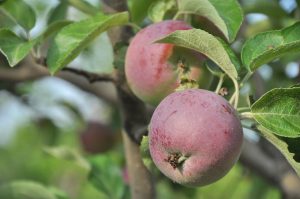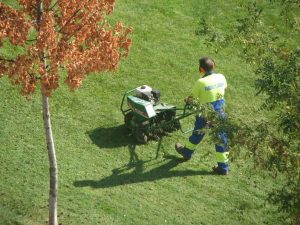September is a special time in the garden with sunny warm days and cool nights with a chill to the morning air. While it’s hard to believe that the last moments of summer are upon us, don’t be fooled; there is still plenty to be done in the garden! Along with harvesting crops, it’s time to start preparing your garden for the winter months and even next spring’s planting. We will find ourselves busy with food collection, maintenance, mulching and planting chores.
Flower Gardens
Summer blooming shrubs, such as Mexican Orange, Nandina, Abelia, Escallonia, Mock Orange, and Crape Myrtle, which have finished blooming, should be pruned this month. Light pruning and tiding of hedges is done in the fall; major hedge pruning should take place just before heavy growth in the spring.
The weather is starting to become more varied; take a walk through the garden and look for anything that might be an issue. Tall flowers might need to be staked to keep them standing.
With the first frost just on the horizon, some plants need extra winter protection. Begonias for example, should be dug, cleaned and stored for the winter.
This is the time of year to separate large clumps of perennials. Iris’ can form large patches that should be thinned and divided to maintain plant health and bloom quality. Once dug and divided, replant them or share them with friends.
Spring flowering bulbs are available in most garden centers. Make sure that your garden is full of spring color by planting daffodils, tulips, and crocus in the fall. Encourage healthy bulbs by working calcium and phosphorus into the soil as you plant. When purchasing bulbs make sure they are healthy; looking for firm and mildew free bulbs.
Vegetable Gardens
As you harvest the garden, this is a great time to add compost mulch to work into the soil in the fall.
Potatoes are ready to dig when their tops die down; just dig them up, dust them off, and store them in a cool dark location.
In the garden, carrots, parsnip and beets can be planted for over-wintering crops. Apply a blanket of compost to newly planted beds to protect them from chilly temperatures. Harvest continues with refuse building for the compost pile. Compost building is important during this month because of ideal temperature ranges. Start a new pile, turn a pile, and spread a “ready” pile into vacant spots to prepare for cover crops. Continue to add disease-free yard debris and produce scraps from the kitchen to your compost pile
Winter squash will soon be ready for harvest. Look for tell-tale signs that they are ready: brown stems and a “ground spot” that changes from white to cream/gold in color will tell you it’s time to harvest. Early in the month, remove smaller fruit from the vine to encourage the larger ones to ripen before the first frost. After they are picked, clean and store your squash at room temperature for a week or so, then move them to a cooler location, about 55 degrees. This will cure their skin and allow for a longer shelf life.
Sow cover crops in vegetable beds that would otherwise be empty during winter months. Cover crops, or green manure, grow during the fall and winter months and are then worked into the soil before spring planting. These provide the soil with nutrient rich organic matter, weed suppression and erosion control. Popular options in the Willamette include annual rye, fava beans and crimson clover.
For all you garlic fans out there, now is the time to plant your favorite crop! With a wide variety of choices to choose from there is certainly a flavor for every palate.
Melons are ripe when they easily break off from the stem. Don’t rush to pick them, as they will not ripen well off the vine.
Tomatoes, the summer staple, are nearing the end of production. Keep in mind that all of the tomatoes on the vine will probably not ripen before the first frost. Along with picking tomatoes to let them ripen off the vine, there are some ways to encourage them to ripen quickly on the vine. Try withholding water from the plant in late Aug / early Sept. which will stress the plant and cause it to focus on ripening the fruit. Another trick to ripen the larger tomatoes on the vine is to remove all the flowers and smaller tomatoes. By doing this, all of the energy will go to the remaining fruit. Of course, there are plenty of recipes out there for green tomatoes, so don’t let them go to waste!
Fruit Gardens
Continue to monitor all plants for disease. Cane Spot could be an issue on raspberries and blackberries. Maintain good air circulation by removing any weeds and canes that are diseased or bore fruit this year. Avoid applying too much fertilizer which produces fleshy new growth susceptible to the disease. Apply fungicide if needed.
While in dormancy, peach and cherry trees may need an application of copper spray to control disease. To maximize results add a spreader-sticker to the mix to be sure that it sticks to the tree.
Indoor Plants & Herbs
House plants that have spent the summer outside will need to come back inside this month. This is a good opportunity to clean them, check for insects, re-pot and fertilize if necessary.
Lawn Maintenance
If planting a new lawn from seed, remember, nothing happens until seeds are soaked to begin germination. The seeds and new shoots should not become dry until a root system develops. Most weeds that appear in a newly seeded lawn will die with cutting. Do not apply weed killers until after three trimmings. Spot sprays are better than general weed and feed products.
It’s a good idea for lawns to be aerated this month.
Prepare your lawn for winter by applying a slow-release fertilizer this month. Be conscious of the environment and help to reduce the risk of run-off into water ways by fertilizing in dry weather and not over-irrigating.
If you have European Crane Fly issues in your lawn the OSU Extension Service recommends that you stop irrigating your lawn after Labor Day. This will help to suppress their populations.
Various Jobs Around Your Oregon Garden
Slugs killed now will not lay eggs for next year. For anyone with small children or pets, look for newer traps that are non-toxic. Slug patrol in late evening and removing them by hand is the safest.
September and October are ideal months to plant lawns, trees and shrubs, ground covers, hardy perennials, even bulbs for spring bloom. Cooler weather puts less stress on the leaves, with the added advantage that the soil is warm enough to encourage root development.
.
Control for root weevils on rhododendrons and azaleas this month. Apply beneficial nematodes to the soil beneath any infected plants. The best way to check for root weevils is to examine plants for fresh notches on leaf edges, especially in tender new leaves.
